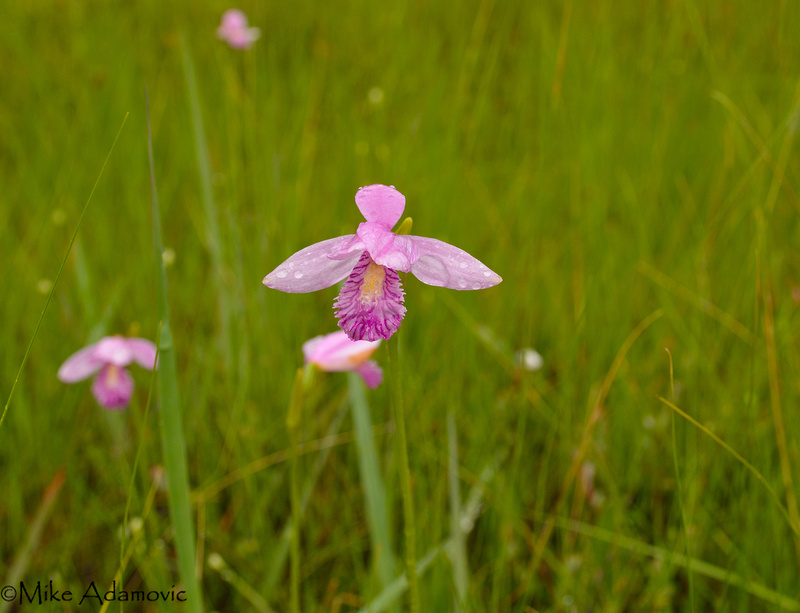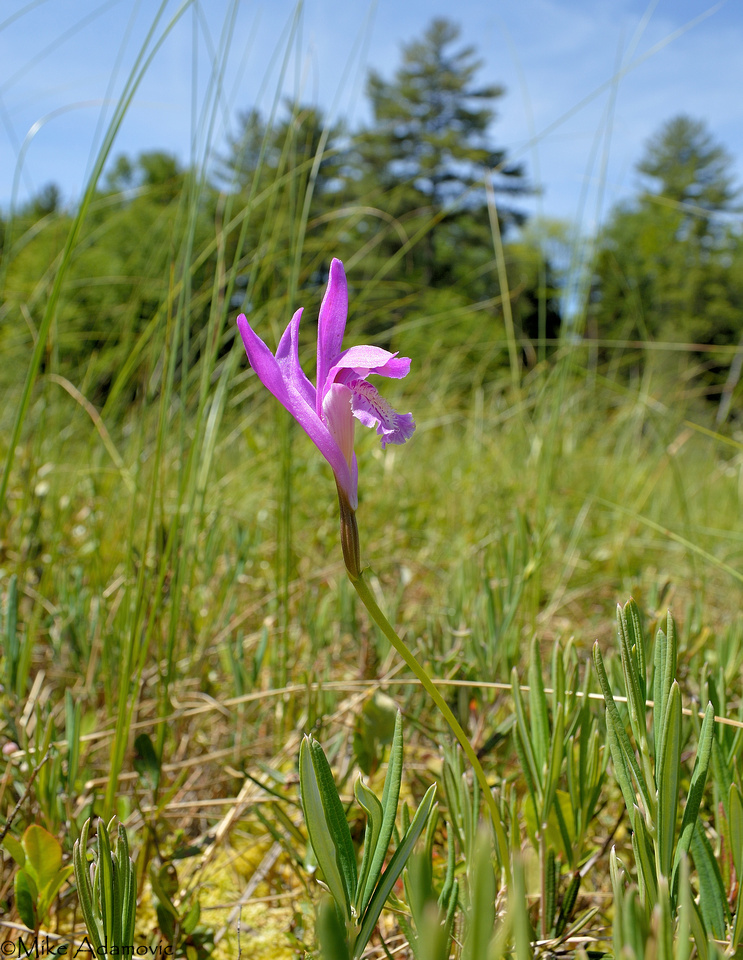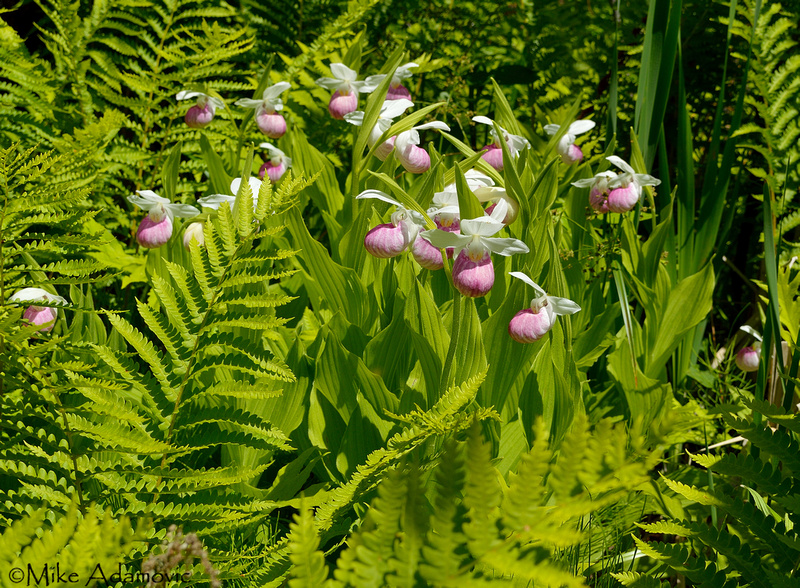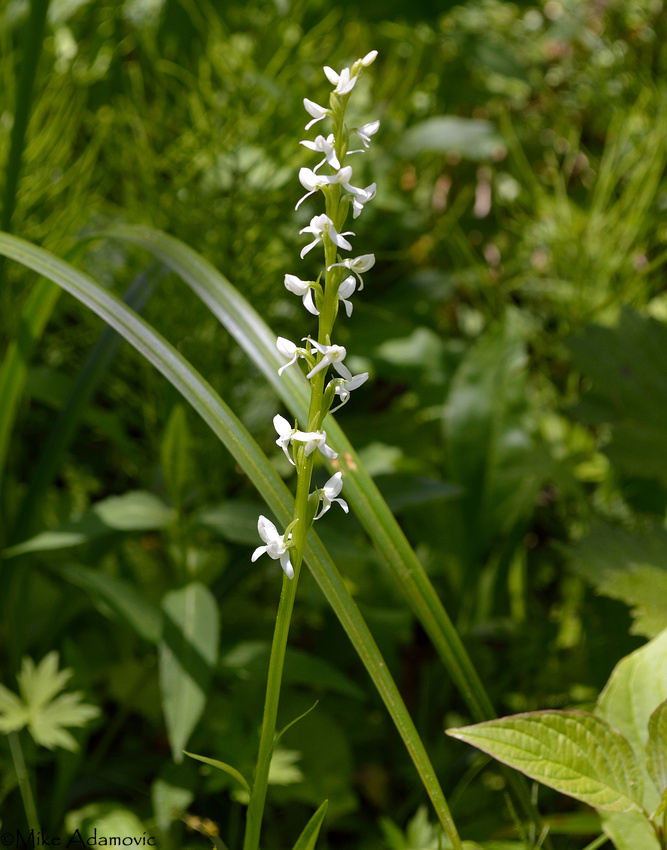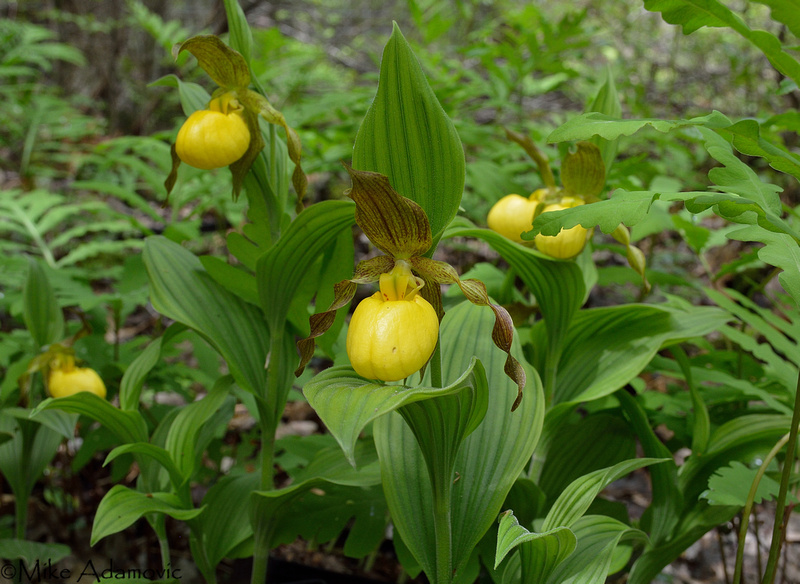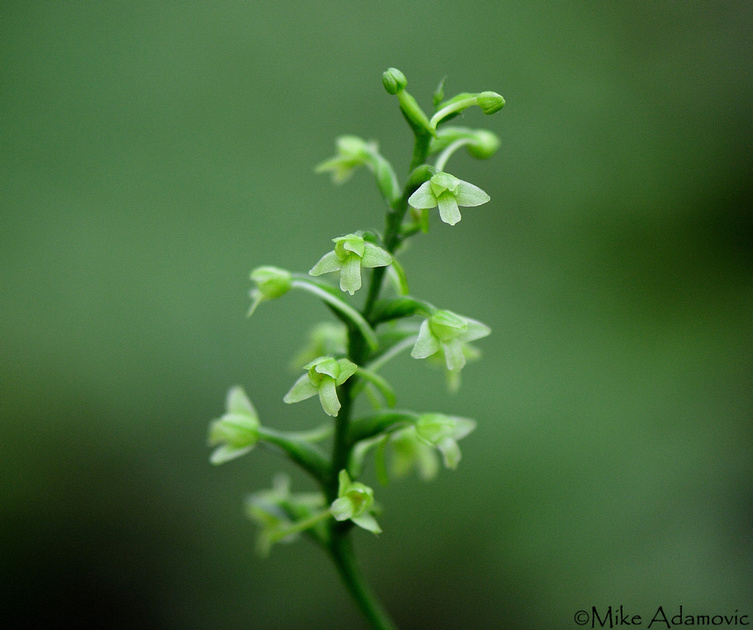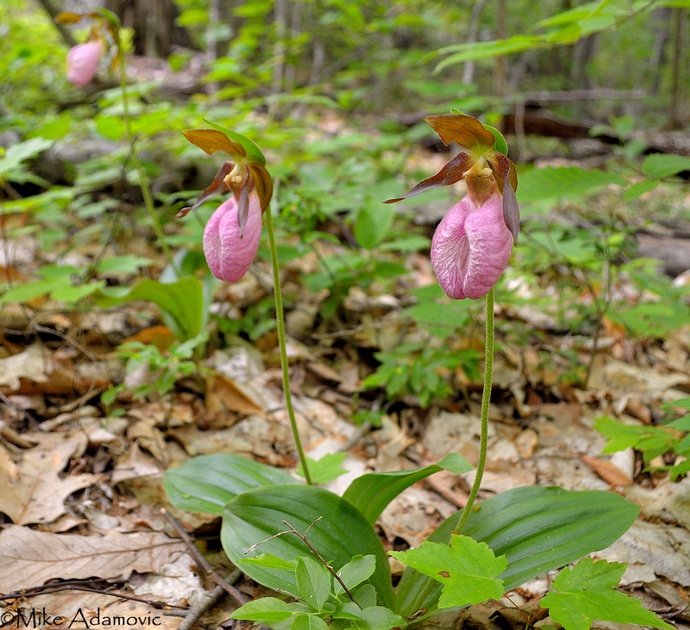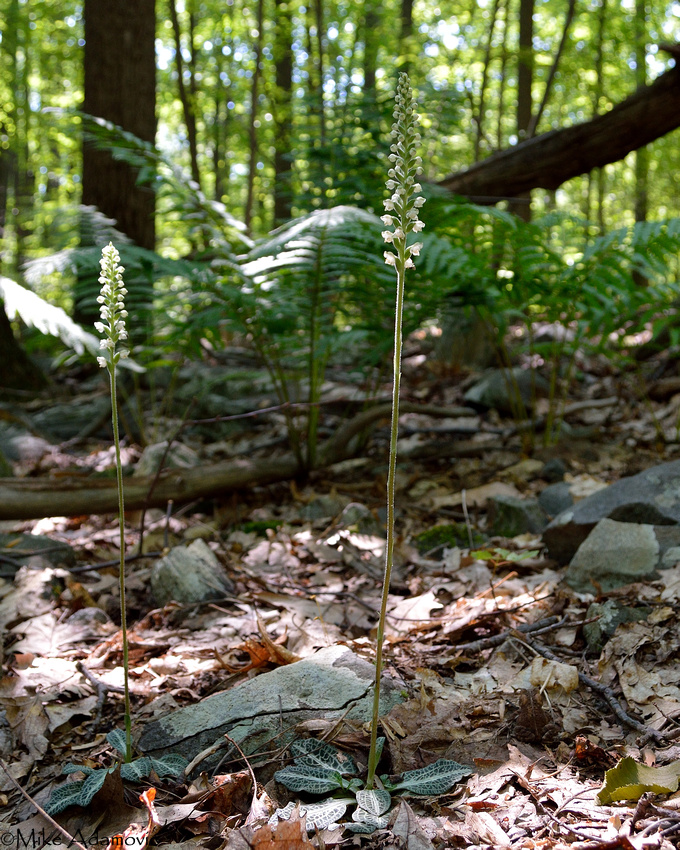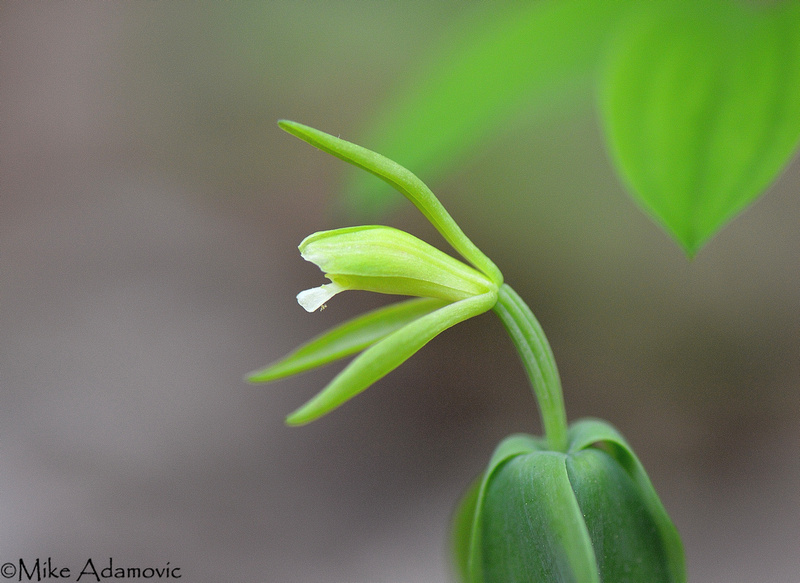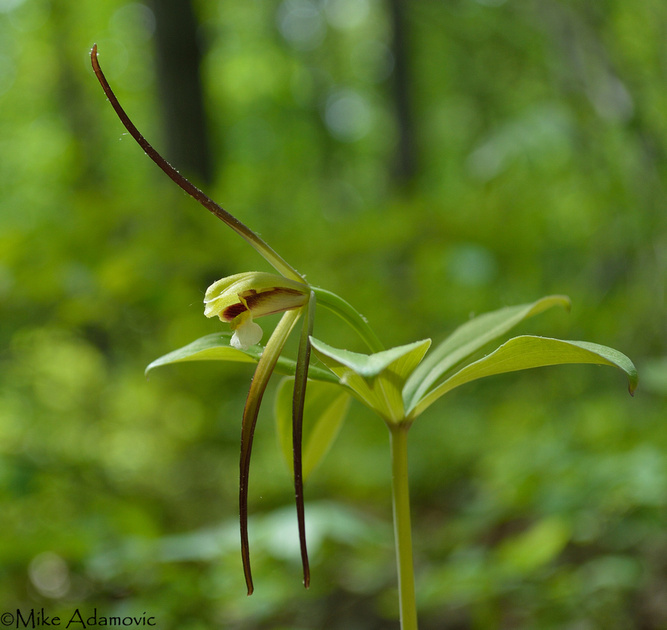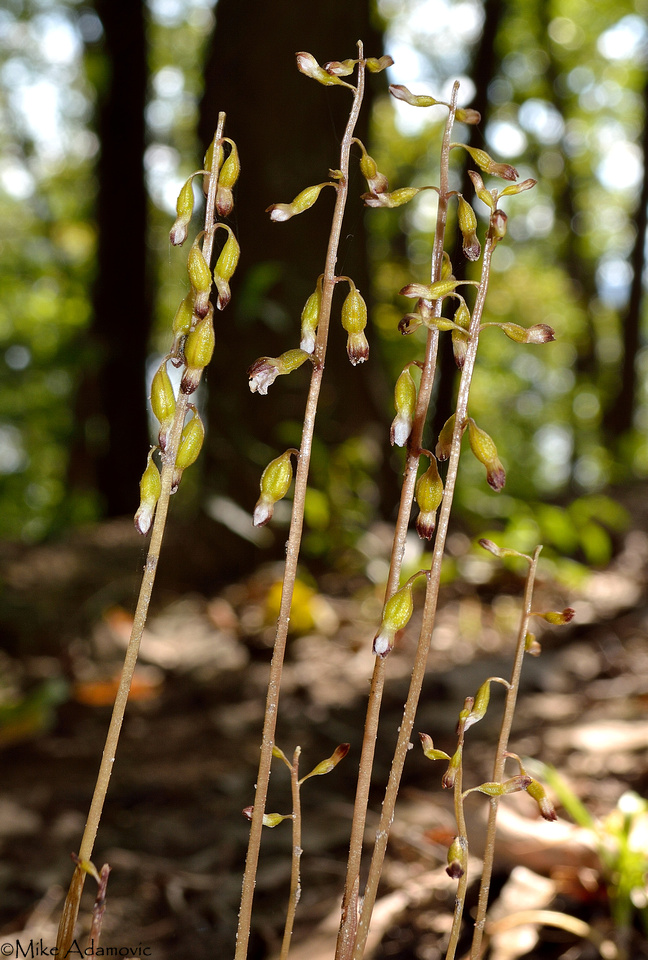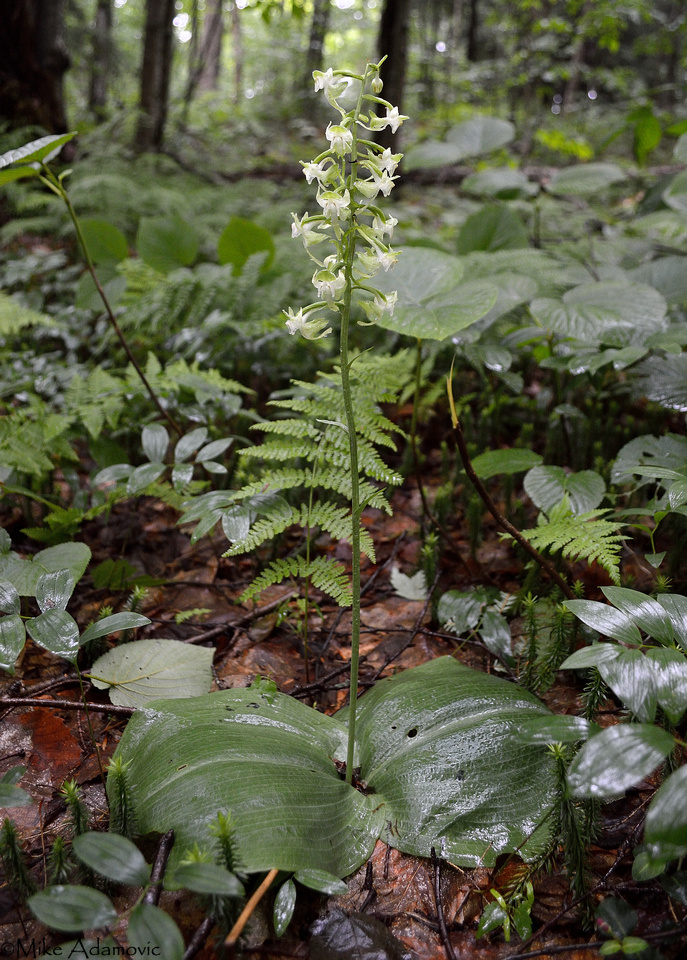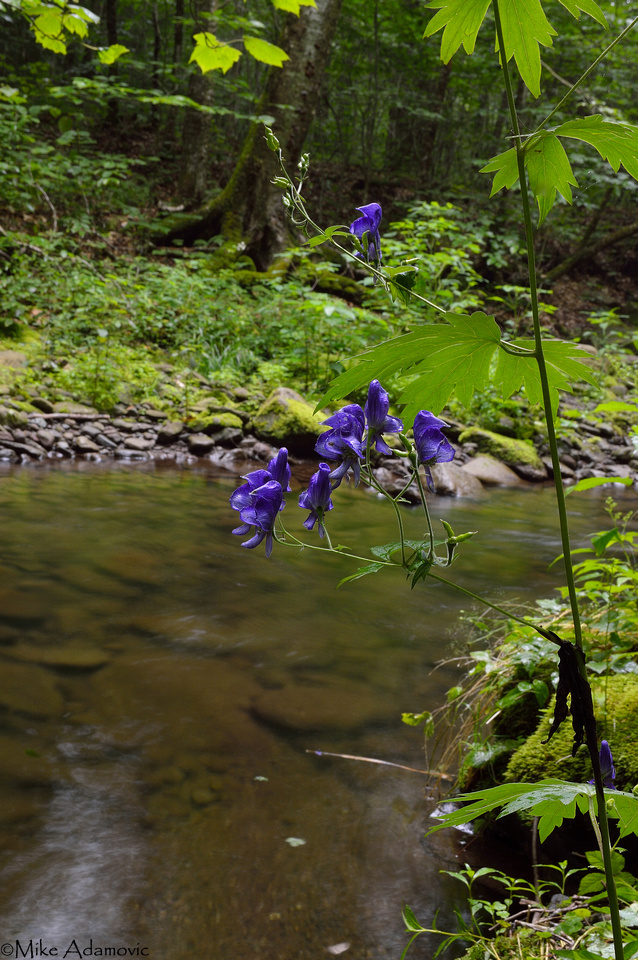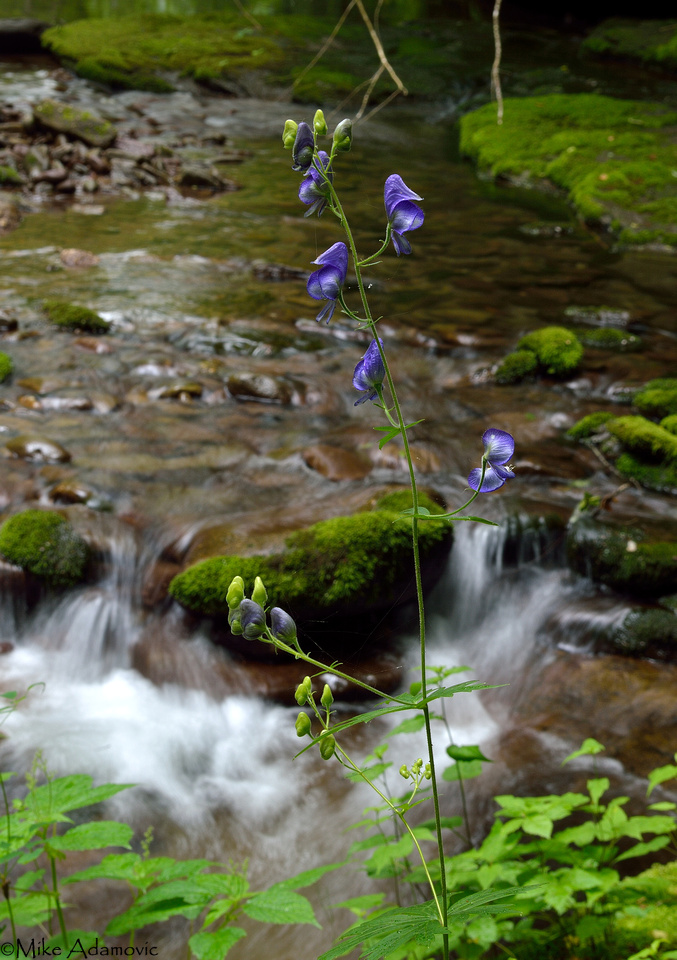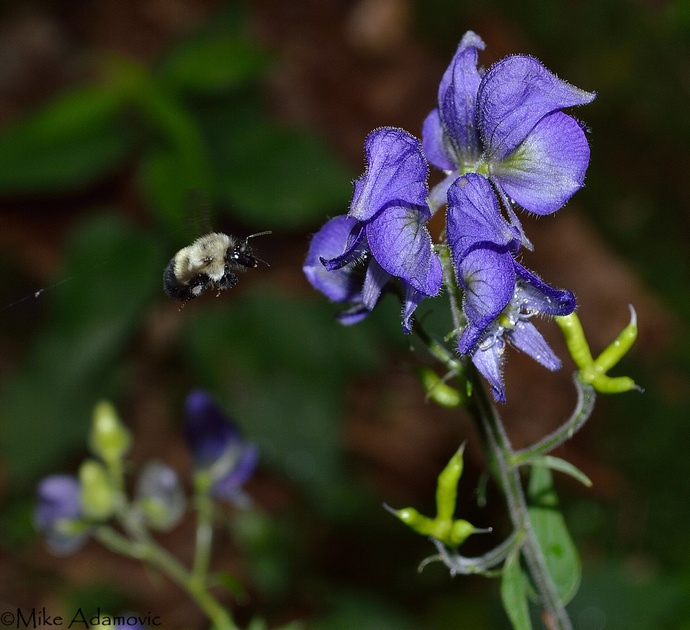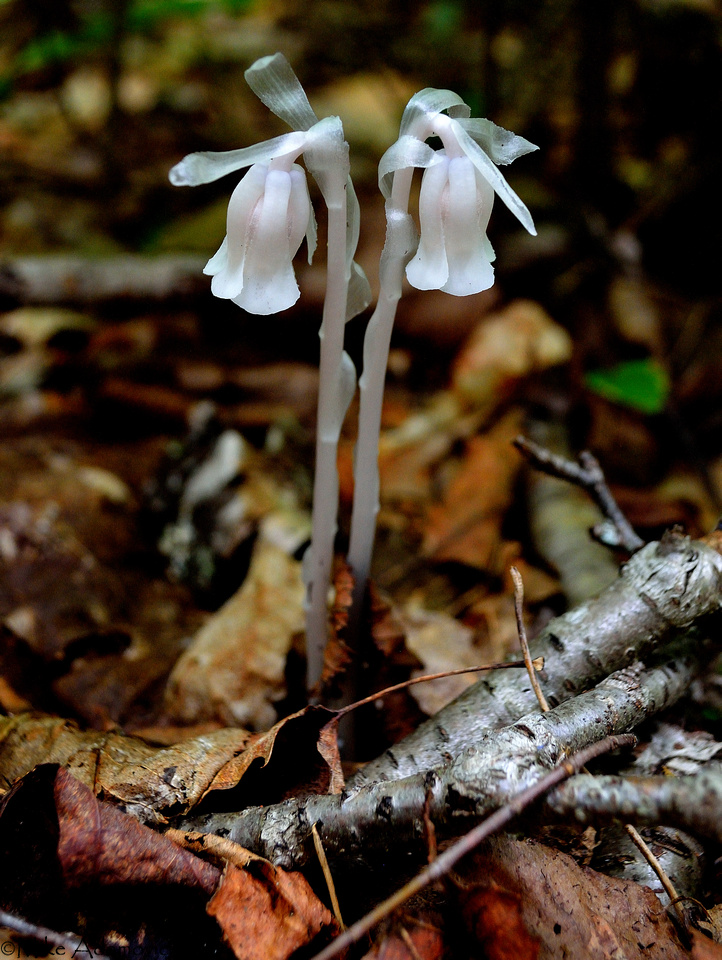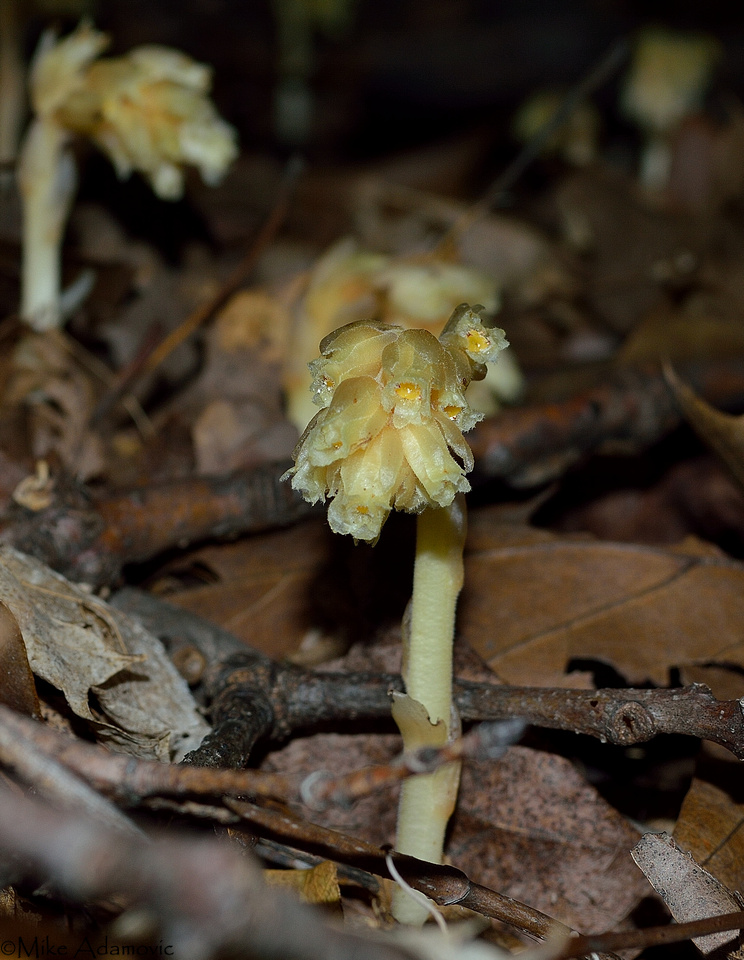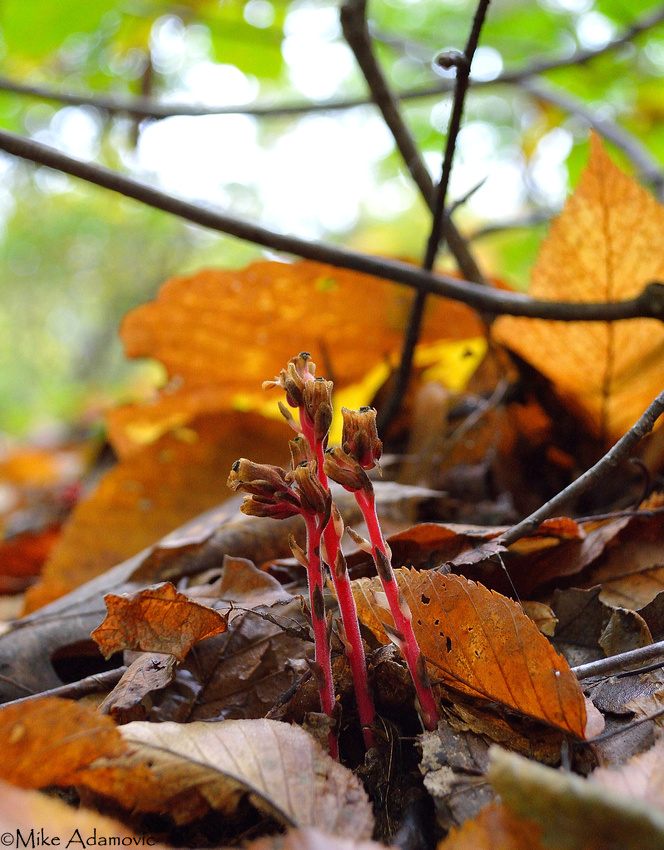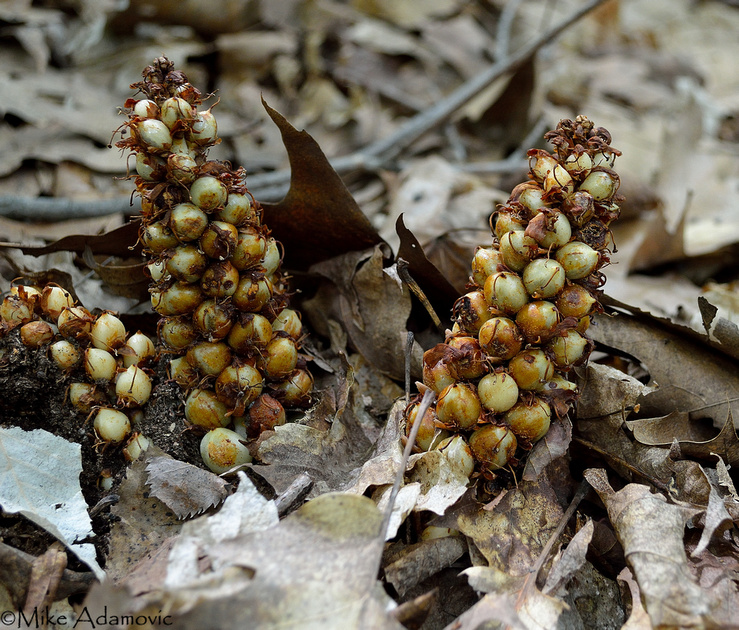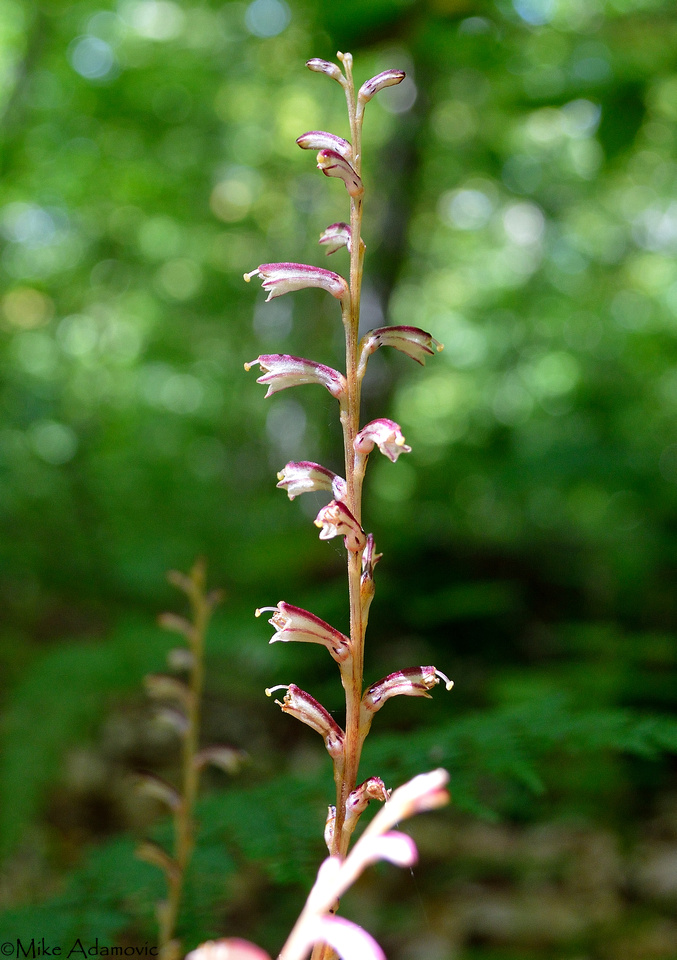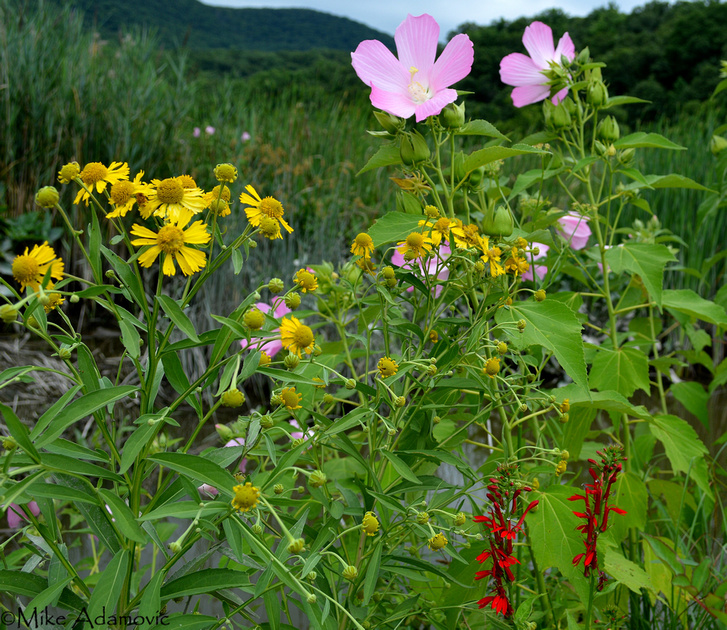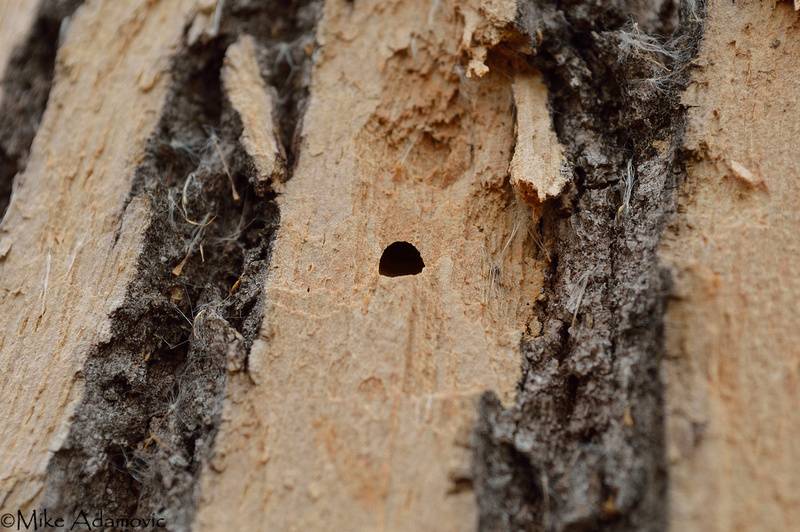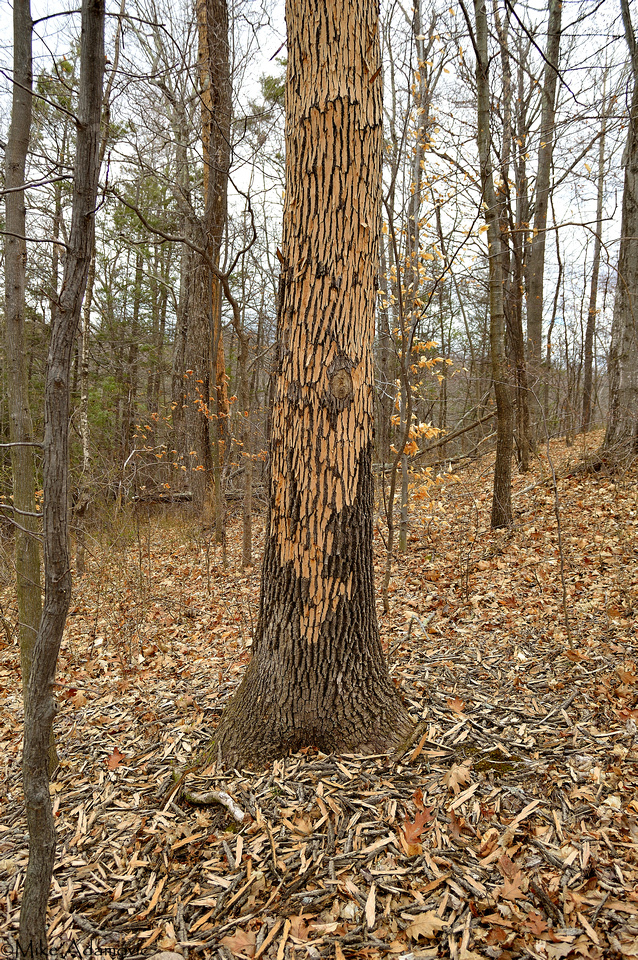Northeastern Orchids
When it comes to plants and botany, the average person normally has difficulty in rousing more than a cursory interest. Compared to wildlife, our leafy cousins are hard to relate to. They don’t breathe or eat in the same sense as you and I, you can’t pet or train them, and they don’t move. A pine or maple certainly won’t be showing off aerial acrobatics like a shifty bat or majestic eagle. And even the most beautiful spring ephemerals—the ivory petaled bloodroot whose large, showy blossoms herald the end of winter—red trillium with its deep maroon petals and hypnotizing multiples of three—or the dainty bluets whose azure tints emulate the sky—can’t dish out a shot of adrenaline on par with a bear or rattlesnake encounter. As a botanist, it’s often disheartening to find this unique group of organisms neglected and not given their due. While it’s undoubtedly true they lack many electrifying attributes, they are far from dull. When I talk to people about a unique shrub, a threatened species of milkweed, or the intricate network of underground mycorrhizal fungi that connect many plants in a similar vein to our internet, I receive either a suppressed chuckle or the half-hearted “Mhmm… that’s interesting” response. In such cases, I feel myself slowly slipping into esoteric obscurity. But when I bring up the topic of orchids, things drastically change. Even those who don’t garden or enjoy a walk in the woods find them charming. Orchids have a reputation of being exotic and refined, standing as a class of their own and being rather discriminating. Most orchids are indeed finicky plants that, true to their reputation, only grace an area with their presence if all of their conditions are met absolutely perfectly. We find common ground with orchids. And for that I am grateful. For while I try to love all groups of plants equally, my heart, like most people, has an especial fondness for these exquisitely beautiful primma donnas. Orchids are tailored for a unique (and narrow) set of environmental conditions and, many times, pollinators. If the pH or light conditions are slightly off, an orchid will not grow. Some have evolved to be pollinated by very specific insects. Prairie fringed and roundleaved orchids are pollinated almost exclusively by long-tongued hawk moths. If these creatures are absent, or dwindle for some reason, the orchids in question will not be found in a particular area. But most importantly, the dust-like seeds of orchids lack endosperm, a material that nourishes a fledging plant (think of a meaty acorn). Lacking sustenance, they must obtain it via fungi. Many orchids have formed a mutualistic association with fungi from a particular genus or even a single species. If the right fungi are absent, no orchids. So, everything needs to fall into place perfectly for an orchid to survive and thrive—even the smallest problems could have disastrous consequences. For this reason, orchids are bioindicators of habitat health and vigor. While individual orchid species are confined to strict habitat types, as a group, they occur over a vast area, from sunny bogs and wetlands to open fields and twilight forests. Bogs are one of the best places to search for these magical plants. Vivid roseate and magenta hues of the rose pogonia, grass-pink, and dragon’s mouth stand out amid quaking lime-green peat mats like torches. Ghostly white-fringed orchids also make an appearance during the decline of summer.
Grass-pink (Calopogon tuberosus)
Rose pogonia (Pogonia ophioglossoides)
Dragon's mouth orchid (Arethusa bulbosa)
White fringed orchid (Platanthera blephariglottis)
Fens, the neutral to alkaline cousin of the acidic bogs, are home to showy lady’s slipper, ladies’-tresses, and bog candles.
Showy lady's slipper (Cypripedium reginae)
Shining ladies'-tresses (Spiranthes lucida)
Bog candle (Platanthera dilatata)
Moist fields are home to ladies’-tresses and the ragged fringed orchid.
Southern slender ladies'-tresses (Spiranthes lacera)
Ragged fringed orchid (Platanthera lacera)
Ragged fringed orchid (Platanthera lacera)
Forest swales and streamsides are lined with yellow lady’s slippers, purple fringed and club-spur orchids.
Large yellow lady's slipper (Cypripedium parviflorum var. pubescens)
Large purple fringed orchid (Platanthera grandiflora)
Little club-spur orchid (Platanthera clavellata)
Forest floors with acidic soils may find themselves dotted with pink lady’s slippers, rattlesnake plantains, roundleaved orchids, parasitic coralroots, and large and small whorled pogonias.
Downy rattlesnake plantain (Goodyera pubescens)
Downy rattlesnake plantain (Goodyera pubescens)
Small whorled pogonia (Isotria medeoloides)
Large whorled pogonia (Isotria verticillata)
Autumn coralroot (Corallorhiza odontorhiza)
When it comes to the roundleaved orchids, there are two types: the greater (Platanthera macrophylla) and (P. orbiculata) lesser. The greater has marginally more robust leaves and flowers. The main distinguishing characteristic between the two comes down to the size of the nectar spur. The lesser roundleaved orchid possesses spurs that are 26 mm or less in length; its close relative’s ranges from 28-46 mm. It is speculated that differing spur lengths have come about from the availability of pollinators. Both species are pollinated by long-tongued hawk moths. However, the most effective pollinator for the greater roundleaved appears to be the wild cherry sphinx moth, which happens to be larger (and has a longer tongue) than the typical moths that visit the lesser roundleaved. The greater roundleaved orchid has a narrower range, calling only the Northeast home, whereas the lesser roundleaved orchid spans from New England to Minnesota and south to North Carolina. There is ongoing debate among botanists as to whether the two are merely varieties of one species, the more common P. orbiculata. I tend to be a splitter, rather than a lumper, and recognize them as distinct species. Whatever your feeling on the matter, measuring the spurs of one out in the woods will make you appreciate the rich diversity of life in all its many shapes and forms.
Greater roundleaved orchid (Platanthera macrophylla)
Greater roundleaved orchid (Platanthera macrophylla) Northern Monkshood—A Rare, Deadly Beauty
Various species of monkshood can be found vegetating in residential gardens, valued for their uncommon beauty. Their slender form, interesting flower morphology, and bountiful raceme of purplish-blue flowers, make this genus among the most spectacular of North American wildflowers. One species, however, which cannot be bought and planted—owing to its federally-threatened status—is northern monkshood (Aconitum noveboracense), most of the Northeast's only native species. Three widely disjunct populations exist. Two are located in the Mid-West (in Iowa and Wisconsin and another grouping in northeastern Ohio), while our Northeastern individuals are confined to the Catskill Mountains of New York. Few are those who have ever seen this species alive in the wild, especially in our region. Only a handful of documented sites exist and are either on private property or are in areas so rugged and remote that only experienced bushwhackers can access. Hopefully more populations are yet to be discovered. Northern monkshood is a glacial relict, a plant whose range has dramatically declined since the end of the last ice age. This species is now restricted to isolated pockets mimicking the cool, damp conditions that were once ubiquitous during, and shortly following, glaciation. The species grows on damp cliffs, among shaded seepage springs and talus slopes, and along wooded wooded streamsides rich in mosses, ferns, and other shade tolerant plants. All sites have either year-round cool air- or water-flow and routinely both. Plants can grow in areas with very little soil and, like red columbine, are adept at colonizing rock crevices. Sometimes along streams plants sprout from rock ledges only inches from the waterline. Such precarious placement has been to the detriment of the species in recent years, as larger and more frequent storms have caused severe flooding which has scoured this rarity away. Increased deer browse from unchecked herds has also been leading to significant declines.
While unlikely to be encountered by chance, this species is unmistakable when in bloom and can easily be seen on an opposite bank of a stream or brook even amid the darkened environs of a dense northern hardwood forest, its typical haunts. The flowers resemble the bowed heads of pious monks enrobed in medieval-style hoods, and stud the erect flower stalks that can rise to a height of four feet. But what really catches the eye is the color. Its enchanting amethyst or royal purple hues radiate from the monochromatic forest like glowing nuclear fuel rods or the faint, yet distinct ghostly displays of fungal foxfire. It's certainly one plant that's not easily overlooked. It's important to note that like a radioactive element or specter, it's best to keep your distance. Despite monkshood's charming physical attributes, it conceals qualities which aren't so attractive or as innocent as this species' common name suggests. All parts of the plant contain extremely potent toxins, which grievously affect the heart and nervous system. Ingesting even minute amounts can prove fatal within hours; absorption of the toxins via the skin can be equally problematic. Northern monkshood's European cousin, Aconitum napellus, has been used for millennia by a diverse audience, from trained assassins to farmers trying to rid themselves of troublesome animals like wolves—hence its other name, wolfsbane. While the toxins are most concentrated in the roots, there have been reports of sensitive individuals being affected by merely taking a whiff of the alluring, siren-like blossoms. Studies comparing the genetic make-up of northern monkshood to Columbian monkshood, a species native to the western U.S, have shown little genetic variation. As a result, some botanists lump the two species together. One thing is for certain, the Catskill population has likely been isolated for many thousands of years and deserves protection. A recovery plan devised by the Fish and Wildlife Service in 1983 states: "Like the search for a rare bird, the search for northern monkshood is the pursuit of a special quarry for many outdoor enthusiasts and nature photographers. These people are enriched by its very presence as a rare, wild thing."
Parasitic PlantsAll plants, we are led to believe, are supposed to be sun-loving and infused with a robust quantity of chlorophyll. Self-sufficient and cloaked in a vigorous green that gives the forests and fields the majestic verdancy that we're accustomed to, it's hard to imagine a plant departing from this standard model and still residing in the plant kingdom. Yet, there is a curious group of plants that do just that. Lacking most attributes of their leafy brethren, they superficially resemble fungi more than anything else due to their parasitic ways. Since these individuals steal food rather than by making their own, they have no need for leaves or the the sugar producing and green pigmenting chlorophyll. Pallid and leafless features are therefore routine. Bunches of Indian pipe, one of the most frequently encountered species, when first beginning to push their way up from the leaves of the forest understory from June to August look like the curled fingers of a body poking out of the soil. If the ghostly white flowers are plucked, they soon devolve into a gelatinous, jet-black mess. It's from these unsettling attributes that this plant has also been nicknamed the corpse flower. Fully erect and mature flowers are quite elegant, however; graced with fine scale-like leaves on the stem that stick out like the feathers of a peacock. It's easy to see how this species received its more common moniker, looking like an old-fashioned kaolin clay pipe. While these "pipes" are curved down towards the ground initially, successfully pollinated flowers eventually straighten out and point skyward as the seed pods develop. The dried remains of blackened flowers are long lasting and frequently haunt the woods for some time, often remaining erect for a year or more in tight clusters.
Indian pipe sustains itself by tapping into an underground network of thread-like roots of a mycorrhizal fungus, known as a mycelium, that is itself bound to the roots of a tree. The fungus and the tree have a mutualistic relationship, where each receives something from the other. The tree gets crucial nutrients, while its fungal partner is gifted with sugars produced by the autotroph. But unlike this beneficial arrangement, Indian pipe siphons away sugars and nutrients from the fungus—and indirectly the tree—without giving anything back in return. Native Americans believed Indian pipe to be a remedy for sore eyes. Referring to dried plants, an early American pharmacopoeia listed it as an "excellent substitute for opium." Pinesap, a close relative of Indian pipe, obtains its resources in a near identical manner. It falls into the genus Hypopitys, which translates to "under the pines," giving an indication where this species is commonly encountered. But it's by no means restricted to areas beneath evergreens. I've seen populations thriving under oaks, close to Indian pipes and other plant parasites, without a pine in sight. Despite its exceedingly widespread range, which encompasses a majority of the North American continent, pinesap is rare to find.
Unlike its ghostly cousin which produces only a single flower, pinesap boasts an infloresence of up to a dozen flowers haphazardly, even messily, clustered near the top of its stem that bear at least a modicum of color. There are two color morphs: pale golden yellow and light to vibrant red, which to some are considered distinct species. The yellow form appears to be more common and generally blossoms from June to early July; the red variety from late August to October.
Perhaps one of the most ecologically important parasitic plants out there is the truly bizarre looking squawroot. Having an appearance of a pinecone or a half eaten, decaying corn cob, squawroot definitely wins no awards in the beauty department, but it does possess an important talent. Its contribution as a food source to hungry wildlife cannot be overstated. Up to 10% of a black bear's diet is made up of this plant. Being high in fiber, it plays an especially helpful role in the spring to bears recently awakened from hibernation by getting their sluggish intestinal tract running properly again. It's also a favorite of white-tailed deer, and may be foraged upon by mice, chipmunks, and squirrels. Seed dispersal is needless to say largely mammalian in nature, with seeds getting transported to new locales via the gut of these creatures. The abundance of squawroot is directly correlated with wildlife populations—as it also is with the presence of certain tree species.
Anyone passing through a grove of American beech trees from August to October should be on the look-out for the purple and white striped flowers of the beechdrops. This species is one of the most colorful and decorative of our root parasites. Numerous tubular flowers are borne along thin, wiry stalks. Each plant may issue multiple stalks emanating from a central root base, making the cluster in some cases resemble a small, leafless shrub. These plants, like many parasitic plants, steal nutrients—in this case from a beech tree—by inserting their haustoria, or modified roots, into the roots of a host. Beechdrops do little damage to trees even though they may severely wrap around and constrict a host's roots. The reason for this is simple: as annuals, beechdrops die at the conclusion of the growing season releasing the tree from its grip. Beechdrops are obvious among the forest understory, growing up to a foot and a half tall. While these grow wherever beech trees are present, they are especially prevalent in the northern half of the Northeast where beeches constitute a significant portion of the forest community.
Numerous other parasitic plants abound. Some, like the various dodder and mistletoe species have severed their connection with the ground. The stringy and messy dodders can be seen draped over the tops of their hosts, looking as if someone tossed a heap of spaghetti carelessly about. After climbing up herbaceous vegetation or low shrubs in vine-like fashion and tapping into a plant's vascular system, its below ground roots disappear. The sickly-hued yellow-orange dodders then feverishly engulf all surrounding vegetation, indiscriminately spreading from plant to plant in areas of dense growth. Dwarf mistletoe, on the other hand, perhaps the most harmful of the plant parasites, is bolted to the upper branches of evergreens. This species is particularly damaging to black spruce in the northern reaches of the region and may actually result in the death of infested trees. Before succumbing, trees often develop a structure known as a "witches broom," a lush and bushy patch of branches on an increasingly spindly looking tree. This is where the parasites can be found. Sugars and nutrients that normally flow uninterrupted throughout the entirety of the tree are selfishly redirected here by the mistletoe. Explosive seed pods can expel seeds upwards of 50 feet away. Landing in the branches of nearby trees, seeds withstand being shaken, blown, and washed away by being coated in a sticky and viscous material that literally glues them to their new host. Even the revered orchids sometimes engage in parasitism. Those from the genus Corallorhiza, the coralroots, make a living similarly to Indian pipe and pinesap. The demure autumn coralroot which blends in among the newly fallen leaves is perhaps the best representative of a parasitic orchid. In contrast, the yellowish-green early coralroot, which blooms in spring, produces moderate quantities of chlorophyll and is known as a hemiparasite, as it both photosynthesizes and steals resources. Despite the negative connotation of parasites, these plants play a vital role in the health of an ecosystem. The most obvious and flower-like among them distribute resources to a broad array of creatures like a forest Robin Hood. The nectar of beechdrops, the protein-rich pollen of Indian pipes, and the starchy corn cob-like fruiting structures of squawroot provide insects and other wildlife with resources that would ordinarily become the leaves and woody tissue of trees, transforming an inaccessible food source into one readily available. All parasitic plants play their part, even when it comes to the insidious dwarf mistletoe. Forest gaps resulting from the die-off of black spruce and other evergreens by the parasite enable additional species to gain a foothold, while also allowing a new generation of trees to arise, so that the forest is comprised of individuals of all ages—the very the foundation of a healthy climax community. Legacy Lost
The first Europeans to arrive to eastern North America were greeted with what some have recently called the "Great American Forest." This mainly uninterrupted wall stretching from the Atlantic to the Great Plains was composed of trees of every shape and dimension, from tiny saplings and mid-sized individuals, that we're accustomed to seeing in our forests today, to truly titanic and venerable specimens, some of which seemed to be as ancient as the very earth itself. The lushness, fecundity, and diversity of the scene overwhelmed the senses to those coming from the exhausted and overly tilled countryside of the Old World. While looked upon as a verdant Eden by some, to many of the early settlers, this untamed land, beset with wild animals and Indians, and where even at noon, a perpetual twilight held sway underneath the dense and lofty canopy, was a fearsome wilderness that needed to be brought to heel and cultivated to satisfy their Christian ideals. Adrien van der Donck, an early resident of New York, was enraptured by every feature of his new home, from the native plants and wildlife, to the geology and even culture of its aboriginal inhabitants, documenting his experiences in his treatise, A Description of New Netherland. Despite his obvious love of the land, he quickly dismissed those who thought it prudent to make more liberal use of the forests, as he believed they contained "such an abundance of wood that it will never be wanting." He further mentions that it was a common exercise of settlers to construct huge bonfires of wood, just because the material was in their way. The cornucopia appeared to be endless and inexhaustible. And so the slaughter began. While later generations would prove to be less wasteful of natural resources as quantities did inevitably begin to dwindle, this didn't stop the razing of forests. Trees were cut for the production of boards and paper, with larger individuals, especially the exceedingly tall and lank white pines being used for ship masts; hemlocks were stripped of their tannin-rich bark for the leather industry; and a variety of trees were axed simply for use as firewood, hickory being especially prized. Even the most ancient of trees weren't spared. Early reports document eastern forests being filled with grand and stately trees of dimensions most Americans have never seen and can scarcely visualize. The naturalist William Bartram in the late 1700's described encountering a grove of black oaks in Georgia, some of which "measured eight, nine, ten, and eleven feet diameter five feet above the ground." In the same area he encountered tulip trees and beeches that "were equally stately." White Pines in Maine and elsewhere attained heights of 200 feet of more. A grove in Pennsylvania supposedly had some that hit the 230 foot mark. And the mast producing chestnut trees prized by everyone for its tasty nuts occasionally reached diameters of a dozen feet in moist and rich soils of sheltered mountain hollows. Forests took on a cathedral-like atmosphere. Additionally, the scents that emanated from the forests and meadows possessed a potency that surprised newly arrived explorers. A member of Henry Hudson's 1609 expedition sailing up the river that would later be named in his honor, described it thus: "The Lands they told us were as pleasant with Grasse and Flowers, and goodly Trees, as ever they had seene, and very sweet smells came from them." Over a century later the taxonimist Peter Kalm would report a "most odoriferous effluvia" wafting in from a flower filled river bank.
Today around only one-half of one percent of original, untouched forest remains in the Northeast. These fragmented patches of old-growth forest are often located in inaccessible locations where it wasn't possible or worth the trouble to clear the land. New York holds the largest quantities of old-growth, the majority of it located in the Adirondack Preserve, followed behind by Maine, and then Pennsylvania. *** There is no single definition of what classifies as old-growth; opinions between ecologists and foresters differ wildly. While the former see old-growth as being defined as forests largely untouched since European arrival, composed of many trees which are normally hundreds of years old and reaching the end of their lives, some foresters classify old-growth as stands which are between a mere 80-120 years old. The reason for this is simple: many trees at this age begin to slow their growth, and shortly thereafter may develop features which are detrimental to the timber industry, such as heartwood rot and crown shrinkage. From an economic standpoint, these types of forests are typically of less value than those that have reached their "peak." But in ecological terms, forest growth comprised of declining giants is of more value. Older forests are stabler, contain significantly higher rates of biodiversity, and play more vital roles in the environment. For our purposes here we will be going with the definition generally agreed upon by ecologists. The exact criteria used to determine whether a forest is truly worthy of old-growth status falls upon the following:
1. At least half of the trees making it to canopy height must be more than half the maximum age of the species. Also, at least a few trees nearing the maximum age are present. 2. Lack of human disturbance. -No stone walls are seen passing through the forest; trees have not been cut; nor any other significant alteration made. 3. Multilayered and uneven forest. -Discrete canopy, understory, and herbaceous layers. Trees of all different sizes and ages are present, from seedlings to towering giants. Canopy gaps exists. 4. Late successional or climax species species are dominant. These vary based on the region and are usually shade-tolerant. Hemlock, American beech, and sugar maple are but a few typical species found at lower elevations. 5. Understory is full of decaying trunks and limbs in various stages of decay. Pit and mound topography is also present—shows where uprooted trees have pulled up soil into conspicuous mounds. Woody debris and the uneven forest floor topography shows the forest has attained a great age. 6. Larger trees possess few limbs on lower trunk. -This is an indication that trees started their lives in a forest with a high canopy. 7. Mosses, lichens, and fungi are prominent. -These organisms take a long time to develop and thrive in stable, long-lived ecosystems.
*** As the years dragged on, the serious adverse effects of logging on the landscape became more profound and unignorable. In New York's Adirondacks and surrounding mountain ranges, clear-cutting denuded entire mountains. Without roots and vegetation to hold down the soil, erosion washed tremendous amounts of sediment into surrounding streams that eventually funneled into the Hudson River. This waterway was of grand importance for commerce and travel. The influx of sediment decreased the depth of the river and aided in the proliferation of sand bars which posed serious problems for transportation. Erosion was far from the only problem. As the trees fell, the ubiquitous sponge-like moss that draped the forest floor withered and died with the increased sunlight and exposure. This moss, according to prominent Adirondack surveyor, Verplanck Colvin, was in spots knee deep on the sides of the mountains and held many times its weight in water. With its absence, innumerable streams ran dry. In summer, terrible droughts gripped the region and the passage on the Hudson was further impacted. But in early spring, as the weather warmed, the opposite occurred and massive flooding took place. Heavy winter snows exposed to direct sunlight quickly melted, streaming prolifically down the mountains and into the narrow valleys. Dense forest once shielded the snow and it melted gradually, with sheets of thick moss absorbing huge quantities of runoff, releasing it slowly in the warmer months. With the removal of these buffers all protection evaporated as quickly as the scant moisture now clinging to the denuded mountain slopes in summer.
Right around the time these preserves were born, reforesting on a larger scale began to take place throughout the entire region. While the creation of parks and preserves assisted with this movement, natural societal shifts proved to be the main driving force. As the West opened up, farmers tired of their comparatively small plots of stony land in the glaciated Northeast, relished an opportunity to ply their trade in the flat and expansive plains of the vastly fertile Mid-West. Abandoned farms in little time reverted back to their original state. The countless stone walls the criss-cross many shady forest interiors are lingering reminders of the region's agricultural past. Logging companies, likewise, migrated away after depleting lumber supplies, finding significantly richer stores along the West Coast, where truly gargantuan trees, such as the imposing redwoods and sequoias, dominated the landscape. Despite rampant development and commercialization, there's more forested area throughout the region today than there was a century ago. While total forest cover has rebounded quite significantly throughout the Northeast, irreparable harm has been done and continues to hamper our sylvan communities. The introduction of invasive species has seen to this. Exotic insects and fungi are the main pests responsible for the plummeting diversity that's presently being witnessed all across the country.
Chestnut
One of the most devastating and heartbreaking losses is that of the American Chestnut. Once widespread throughout much of the eastern half of the country, and comprising as much as 25% of some forests (mainly in the Appalachian Mountains), this species is now largely absent thanks entirely to the Asian fungus, Cryphonectria parasitica. First documented infecting trees in New York City in 1904—the result of a contaminated shipment of Japanese chestnuts—within a few decades it spread by means of microscopic spores throughout the American chestnut's entire range, killing off an estimated 4 billion trees, or 99% of the population. The fungus kills infected trees by destroying the cambium layer, mainly by the production of toxic compounds that lowers the pH to levels that are deadly to cells. Over a period of approximately 2-4 years the fungus encircles the trunk, effectively girdling the tree. Tiny orange-brown patches on the outside of the bark, which eventually form into expansive cankers, indicate the fungus's presence. Once lively forests quickly became skeletal versions of their former selves. The highly rot-resistant wood ensured their bare frames would remain to haunt the woods for years to come. After their disappearance other species claimed the chestnut's lost territory, dramatically reshaping forests. In the southern tier of the Northeast, Oak-Chestnut forests, dominated by these two genera, were most common, but eventually morphed into Oak-Hickory forests. The disappearance of this important mast-producing species, which each autumn covered the forests floors with copious quantities of large, meaty nuts left wildlife scrambling to find alternate sources of food. While the oaks and hickories both provide valuable nuts, they are neither as large, nor as reliable, as the chestnut. Acorn and hickory crops are erratic; some years they're plentiful, others nearly non-existent. Chestnuts, by comparison, consistently provided prolific bumper crops every year. These trees lived in a variety of habitats, but flourished especially well in rocky hills and mountains with thin soil, gaining a solid foothold and thriving where few other trees could. Average heights ranged from 60-80 feet, but often achieved far larger dimensions. In an open pasture in Sheffield, MA, one observer noted the presence of a tree with a 30 foot circumference. Such trees were greatly prized by farmers. The nuts were an economically important crop. And the wood, being relatively lightweight, resistant to decay, and straight-grained, was utilized in the construction of homes, furniture, and fence posts, among other uses. In the spring, cream-white flowers studded along numerous floppy catkins at the ends of branches, looked, from a distance, like fog or snow draped across the undulating landscape, the trees being present in such lush profusion. It was a vastly impressive sight. For all of these reasons, the American chestnut was declared to be "one of the most magnificent trees of our woods" by a nineteenth century author. Despite the chestnut blight toppling this tree as a canopy species, it has not been fully eliminated. They continue in some areas to live on as sickly shrubs of the understory. The fungus attacks above ground portions of the plant, yet leaves the roots alone. Chestnuts are capable of regenerating by root sprouts. Fortunate individuals will rise perhaps as many as 30 feet before the fungus once again topples them. The highest concentration of these resprouts I've encountered in the region is in Connecticut along the Appalachian Trail on the slopes of the craggy and boulder strewn Schaghticoke Mountain. Here, in certain areas, chestnuts still do constitute at least a quarter of the trees present. And a small fraction actually fruit, although the nuts produced are generally abortive and undersized. While the loss of the chestnut is the most extreme example of the negative impacts wrought by invasive species to date, this could soon change. Hemlock and ash trees are facing the prospect of destruction to a similar degree.
Hemlock
The eastern hemlock, finally recovering from its long exploitation by the leather industry throughout the 19th century, now faces an even graver threat than the axe. This time it comes from an insect whose destruction is far more encompassing and complete. The culprit is the hemlock woolly adelgid. This tiny, aphid-like insect, feeds on sap of young branches, stealing crucial starches that are necessary for the growth and maintenance of the tree. Fuzzy white egg sacs coat the underside of branches of infected trees. Typically within a period of 4-10 years, the trees, sucked dry, are unable to recover and die. The old adage, "those who forget the past are doomed to repeat it" is most appropriate here. As with the chestnut blight, these pests arrived from Japan, first being detected in the eastern U.S. in Virginia during the early 1950's. Since then it has been creeping north and west by about 15 miles a year. Currently, most infestations are limited to the southern half of the Northeast. Northern reaches of the region, as of yet, will be difficult to colonize, as the adelgid is cold intolerant. In the future, warmer and less severe winters driven by climate change may allow the pests access to the evergreen-rich north.
Some of the most ancient of our trees are hemlocks. This slow growing species can attain an age of 800 years or more. The oldest ever recorded was purportedly nearing its 1,000th birthday. Size can be deceptive when it comes to age. A 6 foot tree living in a shady understory might be as much as 60 years old. Rapid growth occurs when a canopy gap floods the lower levels with light. Until then, trees patiently wait for a fortuitous overhead disturbance. Hemlocks require damp and fertile soil. They are frequently located in dark ravines and north facing mountain slopes, where streams are present or moisture is prone to linger. Once a grove is established the unusually dense canopy ensures even less evaporation takes place. More moisture is also retained though the thick mats of moss which are apt to accrue in these conditions. Unlike the chestnut, hemlocks lack the ability to regenerate after being damaged. Due to lack of regeneration, their slow growth rate, and the fact that hemlock is a climax species that can only take hold later in the line of forest succession, hemlock forests take ages to recover. When they disappear they are likely to be replaced with forests of birches and oaks or those compromised of beech and sugar maple, depending on latitude. A widespread loss, similar to what we're now experiencing, did occur once before, beginning approximately 5,500 years ago. Based on pollen samples recovered from bottoms of bogs and other wetlands that have been stratified in distinct layers, it's possible to determine the species composition and abundance surrounding these areas during a specific time frame. The samples indicate a quick and catastrophic event all but eliminated these trees from the eastern U.S. Over the years, some have blamed this loss on disease, insect pests, changing climate, and various combinations of the three. Recent research shows that the larvae of the hemlock looper, a type of moth, was most likely responsible for the bulk of the damage. The larval inchworm stage feverishly devours hemlock needles, causing near total defoliation that can kill trees in as little as a year. These pests have also been described as "wasteful feeders," by their habit of taking only a bite or two of individual needles before moving onto the next. Large outbreaks periodically occur in localized areas that can result in the deaths of hundreds to thousands of trees. It has been theorized that up until the great decline, hemlock loopers were absent in the east. Both an eastern and western variety exist: it's thought that loopers from the Pacific Northwest somehow managed to journey east. They arrived to a land peppered with hemlocks bearing almost no resistance. Not until 2,000 years later did populations begin to rebound, when the few survivors that did possess some level of defense slowly managed to repopulate the region. Hemlock concentrations still fall below what they were at before their precipitous decline. The lagging numbers have been attributed to climatic differences, most notably a shift to drier conditions. It is likely our present problem with the adelgid will follow a similar course. Hemlocks will be reduced to fractions of their former numbers but will ultimately mount a resurgence. Too bad it will take millenia to accomplish.
Ash In 2002, the first recorded instance of the emerald ash borer—yet another invasive insect—was documented in the U.S. for the first time in Michigan. Since its discovery it has spread throughout a sizable swath of eastern and central North America. This Asian pest targets members of the genus Fraxinus. All native ash species are susceptible. The emerald ash borer is a striking insect, boasting an iridescent, metallic green exoskeleton. Attractive adults cause only minor damage to ash trees by feeding on foliage. The grubby larvae, on the other hand, swarm throughout the inner bark, leaving behind serpentine galleries, or pathways, that disrupt water and nutrient transport. Eventually, the bark is girdled by these passages and the tree succumbs. Large individuals will die after 3-4 years on infestation; young trees in as little as a single year. Apart from peeling back the bark to look for larval galleries, D-shaped holes in the outer bark is a telltale sign that indicates the insect's presence. These holes are created as newly metamorphosed adults exit the tree. In areas with abundant woodpecker populations, infested trees can be seen at a distance stripped of their bark. These birds on their quest to locate their next meals fastidiously tear it off, sensing a cornucopia of wealth beneath. The entirety of the outer bark, from base to crown, is frequently stripped off, with significant piles seen littering the forest floor beneath the tree. This can make the forest appear significantly sicker than it actually is, especially in locations comprised primarily of ashes. Woodpeckers play a role in diminishing emerald ash borer concentrations, but only to a minor extent, as these insects are in too prodigious quantities to meaningfully combat.
Certain regions, such as New England, will be minimally impacted, as ash trees generally make-up only around 1-2% of forests. New York's forests, by contrast, average roughly five times that amount. Certain western areas of the state possess much higher percentages, with ash comprising in some cases over a quarter of the tree population. In this respect, the loss of the various ash species will be felt as intensely as that of the once prevalent chestnut. It's been said that ash is second only to oak in terms of usefulness when it comes to trees of North America. Ash is a valuable lumber source, prized for its strength, hardness, and elasticity. Baseballs bats, tool handles, and a wide variety of furniture is made from its wood. Native Americans used and still use it to construct baskets. And to the Penobscot tribe, the ash is pivotal in their creation myth. Ecologically speaking, ashes are important for their role in providing shelter and food for wildlife. Large diameter trees often form spacious trunk cavities when damaged. These are used as nesting sites by squirrels and various birds, most importantly woodpeckers, wood ducks, and owls. Seeds are eaten by birds and small mammals; foliage is browsed by deer; and bark is occasionally chewed by beaver and porcupine.
While the invasives just addressed are causing some of the most severe problems in our region, they are by no means the only to daunt us. The Asian longhorned beetle is another nasty exotic insect wreaking ecological harm, killing off scores of maples and other hardwoods. There's also the gypsy moth, white pine blister rust, and Dutch elm disease. While we work diligently to address these and other problems, new issues are always cropping up to bombard and overwhelm. Often it makes one question whether it's worth all the effort to attempt to correct these mistakes. We can't let apathy take over, though. We're making real progress in certain instances. Biological control, or biocontrol, for short, is increasingly being used with promising results. This involves using armies of living organisms to wage the war for us. It has already been successful with diminishing the exotic purple loosestife in wetlands. We're now using tiny beetles that feed exclusively on the woolly adelgid to help save the hemlocks. In a similar vein, crossbreeding and genetic engineering techniques are now in play to help make the American chestnut blight resistant. As long as we continue to care about these plants we will find a way—if one exists. But, as the sagacious Erasmus once said: "Prevention is the best cure."
Legend of the Trailing Arbutus
One morning as he rose from bed ready to undertake his daily collection of fuel, he noticed his joints were unusually sore. This was cause for concern, for despite having been on this earth more years than a mature oak has leaves, he almost always enjoyed a pain-free existence, numbed to a degree as one would be just before experiencing frost bite. Over the coming weeks, the pain became more excruciating until he could hardly move a dozen steps before collapsing in agony. No longer able to gather the necessary allotment of firewood to keep his lodge heated, he feared he would freeze to death. The howling winter winds which ceaselessly tore through the cracks in the rickety structure always ensured a rapid decline of the woodpile he labored so intently to acquire. As his pile dwindled and he threw the last log onto the fire, he uttered a prayer to the Great Spirit that he should not perish from the cold. In the evening when all that remained in the hearth was a smoldering pile of glowing coals, there was a knock at the door followed by the entry of a maiden of incredible beauty. Extending from the top of her head to the bottom of her back were finely braided chestnut-brown tresses, adorned with colorful and exotic arrays of wildflowers. Her smiling face had beaming features as comely and welcoming as the spring sun. Each blushing cheek was burnished with the color of a fiery rose, and her gentle eyes were a delicate, fresh green, of a hue identical to that of newly awakened vernal forests. The material of her clothing consisted of sweet grasses and fragrant ferns. In place of traditional shoes, her feet were swaddled in a type of pouch-like orchid known as the pink lady's slipper. And wrapped around her wrists were bracelets fashioned from the pliable limbs of the fuzzy pussy willow. After the old man looked over her unusual attire and finding himself curious of her story, invited her to join him by what remained of the fire. Introducing himself, he declared: "I am Manitou. When I shake my hair snow falls across the landscape; wherever I walk the harsh winds follow close behind, sending the animals scurrying into their holes; and when I blow my breath at rivers and lakes they become hard and stand still." The young maiden responded, "When I breathe, warm air pours from my mouth—streams gleefully awaken, and frogs begin carousing. As I speak the birds utter their lively songs and fill the silent woods with joy. When I braid my hair the rains come and turn the lands a verdant green. And wherever I saunter across the hills, grasses and wildflowers jut from beneath the thawed earth. I, too, am Manitou." As the two further discoursed the lodge gradually increased in temperature until there was no need for a flame, the result of the warmth issuing from the maiden's heated lungs. The old man, meanwhile, grew more relaxed as they continued to speak. By the time the lodge took on a spring-like atmosphere he had drifted into a deep and unshakable sleep. The maiden then placed a hand over the old man's face. As she did this small streams of water began to flow from his mouth and he began to shrink in size until he gradually disappeared altogether. When all that remained was his robe of fine furs, she placed her hand over it, transforming this relic of winter into a heap of leathery, green leaves. Taking from her braided hair the most precious white flowers she possessed, she hid them among the leaf pile. Softly breathing into the new creation, she whispered, "I give you all my virtues and purity. Whoever shall wish to admire your beauty, inhale your scent, or pluck you from the earth, will do so on bended knee." From here she exited the lodge and proceeded to head north, the leaves opening on her approach, the birds singing her praises as she passed by. Everywhere she stopped, and nowhere else, the trailing arbutus grows.
|



